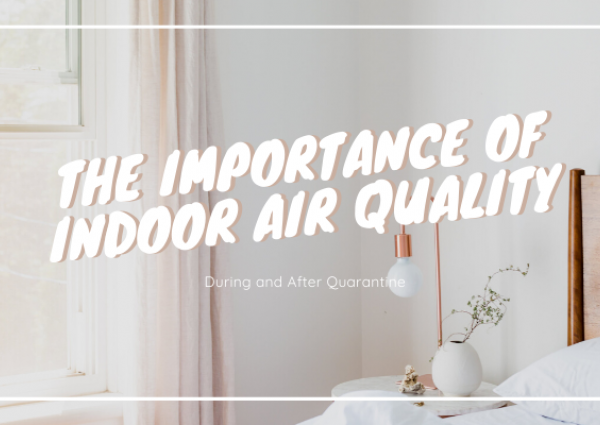As I write this post, we are in the middle of the COVID-19 pandemic. Every news outlet is delivering a steady stream of information, reminding you to:
- Wash your hands often
- Cough and sneeze into your elbow
- Wear a facemask if you are sick
- Clean and disinfect your surroundings
- Avoid close contact with other people (i.e., social distancing, isolation, and quarantine)
According to the Centers for Disease Control and Prevention (CDC), “… isolation and quarantine help protect the public by preventing exposure to people who have or may have a contagious disease.”
If you're following the CDC's recommendations, which we fully endorse, there's a good chance you're reading this from the comfort of your home. While it is wise to practice social distancing, isolation, and (in some cases) quarantine to protect yourself and others from getting sick, did you know that the air quality in your home may already be affecting your immune system?
This article offers helpful information about the quality of your indoor air that will serve you during and beyond the current pandemic.
According to the United States Environmental Protection Agency (EPA), “Americans, on average, spend approximately 90 percent of their time indoors, where the concentrations of some pollutants are often 2 to 5 times higher than typical outdoor concentrations.”
In more detail, there are three types of indoor air pollution:
- Particulates: dust, dirt, soot, smoke, and drops of liquid
- Biological: mold, bacteria, and viruses
- Chemical: volatile organic compounds (VOCs), which cause odors and are potentially toxic
By cleaning and disinfecting your surfaces, you could be introducing other chemical contaminants and VOCs into your home. In a 2009 report by CBC Marketplace, toxicologist Shawn Ellis, the president of Building Health Centre Inc, revealed the results of testing three products for their VOC levels: Pledge Multisurface Cleaner, Clorox Disinfecting Wipes, and Lysol Disinfectant Spray.
- Pledge - 273 parts per billion (ppb)
- Clorox - 1,000 ppb
- Lysol - 1000x higher than Clorox at 1,200 parts per million (ppm)
Products with VOC levels above 500 ppb can cause chemical sensitivities in some people. More problematically, VOCs have been linked to neurological diseases, organ damage, and cancer according to the EPA.
Yet, we rarely talk about the quality of indoor air outside of the heating, ventilation, and air conditioning (HVAC) industry. Not surprisingly, many homeowners are unaware of when potential particulate or chemical events occur inside their home. What’s more, most homeowners have no idea when their space lacks proper ventilation, fresh outdoor air, or that their one-inch furnace filter isn't doing them much good.
My intention in writing this article is to use the COVID-19 pandemic as a jumping-off point to speak candidly about the importance of indoor air quality and how it will continue to play a significant role in your lives and health during and after quarantine.
Perhaps more than any other time, people are ready to listen.
--
If you’d like to learn more about any of the products ServiceOne offers to combat particulates, biological, and chemical pollutants, please visit https://www.serviceone.com/omaha/services/indoor-air-quality
References:
“CBC Marketplace: Household Cleaners: If you can’t pronounce it, should you use it?”
Indoor Air Quality | EPA's Report on the Environment (ROE .... https://www.epa.gov/report-environment/indoor-air-quality
Quarantine and Isolation | Quarantine | CDC. https://www.cdc.gov/quarantine/index.html

